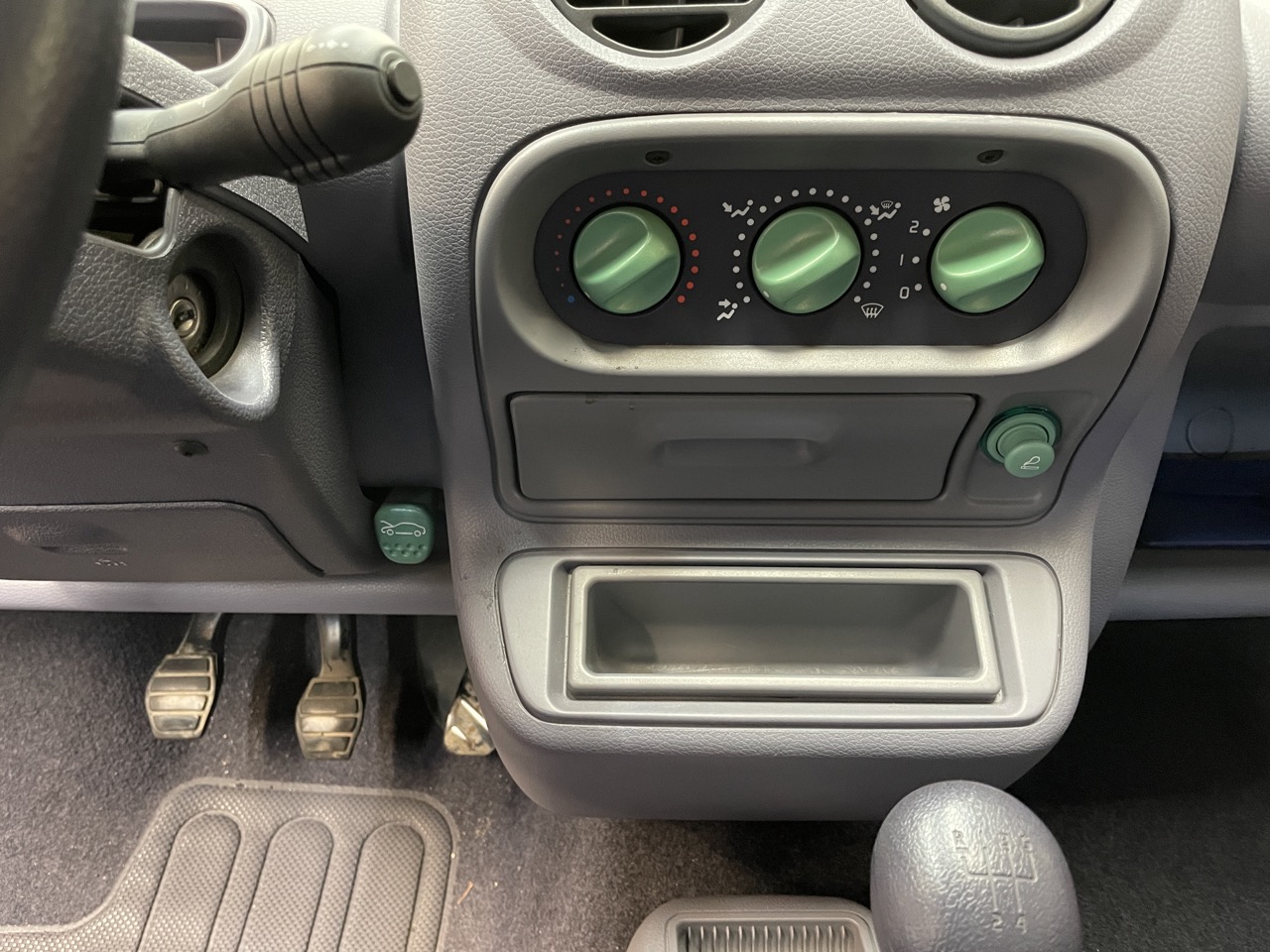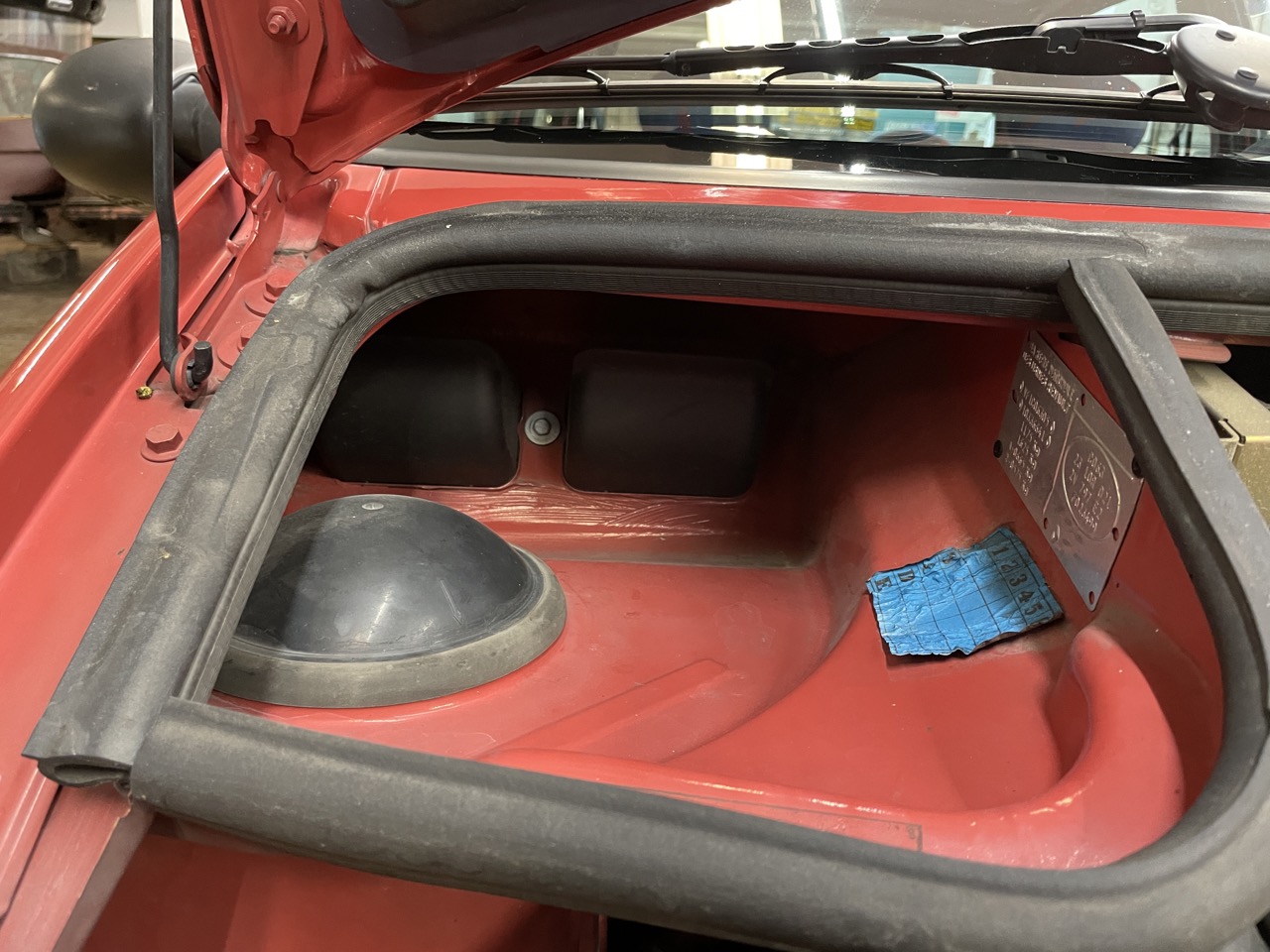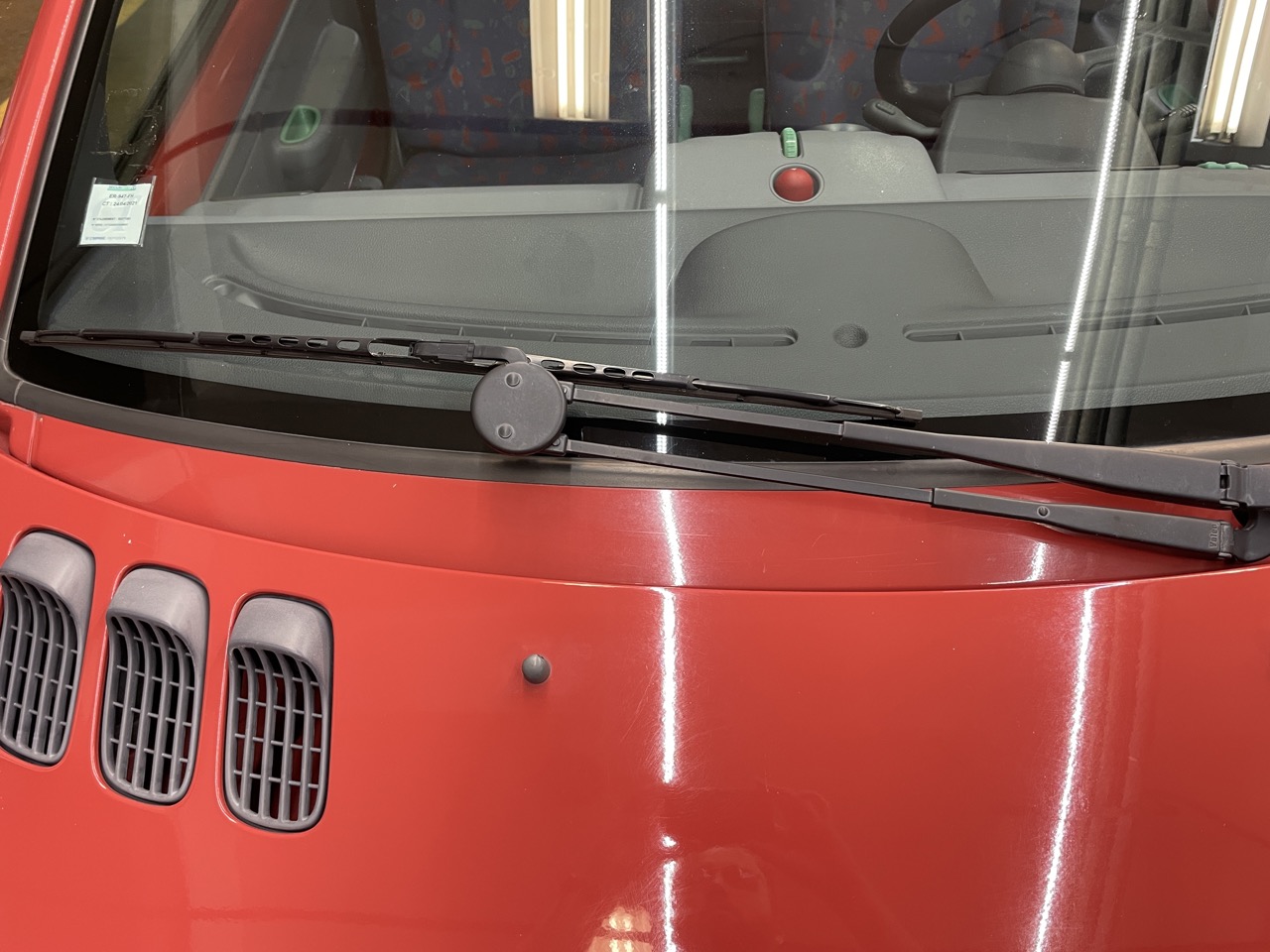I didn’t intend for this to be Renault Appreciation Month here at The Autopian, between my previous look at Lane Motor Museum’s Renault Megane, and Mercedes’s love for the Renault Sport Spider, but I’m quite enamored with the museum’s newest acquisition, a 1993 Twingo.

One of Lane Motor Museum’s biggest assets is Jeff Lane’s good friend and our man-in-France Claude Gueniffey. In addition to translating and helping me pronounce things correctly, Claude also seeks out cars. Of the museum’s 550 cars, French manufacturers make up the majority of the collection. For this delightful Twingo, he didn’t have to look far; this was his mother-in-law’s car.

This Twingo is a first-year model. It debuted at the 1992 Paris Motor Show as Renault’s newest city car, the smallest passenger car class defined by the European Commission. The name Twingo is a portmanteau of twist, swing, and tango, which are all dance styles that did not originate in France. I suppose Renault Cancan didn’t sound as marketable.

At its launch in April 1993, the Twingo was fitted with a 57hp, 1.2 liter overhead valve four-cylinder, coupled to a five-speed manual. An automated manual came a few months later under the “Easy” trim level (how delightful!)


The Twingo has arguably one of the friendliest faces of the 1990s, right up there with the first generation Dodge/Plymouth Neon. The rear of the car is a simple affair, with one rear backup light in the upper right taillight cluster, and an unusual-to-me bumper-mounted license plate light that shines up onto the plate, as opposed to down from above.

I also like the exterior’s boxy yet rounded-off look.

If you’ve read my past articles, you’ll notice that automotive interior design is my jam. I get excited about smart, clever, and functional interiors that don’t look like a gray-scale office cubicle. This Twingo has all of these characteristics in spades.

I love the contrast of the austere dash arrangement with the rad multi-color *looks closer* mathematics symbols on the seats? I guess the upholstery designers had to put something on there to dress things up a bit, but I think it’s funny to imagine that one of them was a calculus enthusiast.

Speaking of those front seats, they are very comfortable; both cushy and supportive with mild bolstering. This is also where the Twingo’s main party trick is revealed: once you remove the headrests, the front seat reclines flat. The rear seat slides fore and aft, and can slide all the way forward to meet the front seat, effectively making a bed. Could you go camping in a Twingo? Sure! Would it be comfortable? Who knows?! It mainly shows off what you can do with the incredible amount of interior space in this very small car.


Maybe I’m just partial to teal, but why can’t accents like hood latches and HVAC controls be a bright colored plastic? Even the friggin’ window cranks and door handles look like they should glow in the dark, but sadly do not.


Back to the dash, you get a minimal, center-mount digital arrangement with fuel, a clock, and the speedometer. There is another bar atop the steering column for basic warning lights and turn signals.


Notice on the HVAC controls this a model with no A/C, so fresh air was fed through those distinctive intakes on the hood, which bypassed the engine compartment and fed air directly into the cabin.


On the simplicity front, why have two wipers when one will do? I love how the radio antennae (although this car has a blank-out plate for the radio) is integrated into the driver’s side view mirror housing. No need to create another hole in the door, roof, or fender.
I’ll write a driving review of this car one of these days (or, you know, someone else from this website could drive it and possibly shoot a video, just a suggestion, whatever.)
[Editor’s Note: (Waves arm and raises hand so high I dislocate my shoulder) – JT]


Over 2.6 million of the first generation Twingos were made, which stayed in production until 2007 (!), with a few minor refreshes along the way. With the introduction of the third generation Twingo in 2014, the engine moved to a rear-mid engine layout [Editor’s Note: I think it’s pretty rear, but it may be on/just fore of that axle – JT], and gained an extra set of doors. The Twingo just ended its production run last year, and is slated to be replaced by a new model based on the very serious-looking Renault 5 prototype.









Just visited them on Saturday and it was their 20th anniversary! Did the basement tour and everything and loved every car i saw!
Rex, I love the fact that you checked to see if the parts glow in the dark!
(missed opportunity by Renault there, IMO)
Here in Portugal you still see a shitload of them, and many are still looking great after almost 30 years. A few years ago I missed out on a few sub-€500 deals for early Twingos in near-mint condition. Prices have gone up a bit, and anything below €700 these days doesn’t usually look so great, apart from the occasional unbelievable deal every now and then (last year some lucky bastard scored a one owner, mint condition, garage-kept ’94 with something like 60.000km that popped up for sale on Facebook Marketplace for €400; the ad was up for a couple of hours).
A few years ago I entertained the idea of trying to convince my wife we should get an early Twingo (a ’93 in Vert coriandre or Jaune indien would be *chef’s kiss* just wonderful) to replace our rapidly ageing ’98 Polo. The Polo’s interior is in such bad shape and the paint job is so faded, even a moderately nice looking Twingo would be un upgrade. But the damn Volkswagen just refuses to die and is so damn reliable (yeah, it surprises me too, every single day), it’s really hard to justify letting it go in favour on the leap into the unknown that is buying a 30-year old entry-level car, no matter how good it looks.
Now I’m angling for a 30+ year old station wagon, preferably an early Volvo 945. That I can justify. I secretly want a Renault 21 Nevada but my wife’s not stupid.
There’s a surprising number of these still around in Germany. I have at least three parking in my neighborhood, saw a fourth one four or five days ago.
Yeah, the number was reduced a lot but still thousands around. Simple but good cars. And cheap.
Fun fact about these antennae: they are actually there to save ok the cable length between it and the radio.
Also mark my words: the Twingo will become the next stupidly priced classic French car of the people. I’m pretty sure they’ll end up costing as much as a dang 2CV at some point.
And the best thing about it is it doesn’t look angry like so many vehicles these days.
I haven’t tried it myself, but I’m told the 2nd gen Prius can also do that fold-flat seat trick. It can also run the AC off the battery and only have to start the engine periodically to recharge, which makes it a great car-camping option.
I’ve forgotten if I’d tried reclining the seat that far on the Prius Gen2, but can say in my experience the P Gen3 was better at seat-reclining than the Gen4. The Gen4 is not as comfortable to nap in.
Yes, the A/C does keep running off battery power and will restart the ICE as needed, however the Gen4 added a automatic hybrid shut off system that will turn the car off from Ready mode after an hour. This was an unpleasant surprise at the drive-in, ended up flashing the moviegoers behind us since you can’t turn the car fully back on without hitting the brake.
Good news though, it seems you can disable the auto-shut off if you manually lock the car doors from the inside (which you’d be doing when napping away from home anyway, right?), so there’s that.
The first gen ones were so good, a surprisingly large number of people imported them to the UK (afaik only 2nd gen onwards were officially sold here). I pass one on my way to work that’s still on the road.
They have much more interior space than you’d think from the outside.
all the small cars at that time had indecent interior space for their size.
I managed to tuck 5 adults with large backpacks ( alpinism sized so 50liter or more , with tents and rope ) in an AX.
( ok two bags ended up on the lap of the backseaters, and one between the front passenger leg… but that was 5 adults & 5 large bags… thankfully we only had 20km of alpine road to go through, I wouldn’t have done that for hundred of kms. [ and I did weird things with that AX ] )
Strangely since then the injterior space shrank to a miser and the external sized gained 30%… and I’m not even talking about hte weight and the fuel economy tied to it. ( I’d really like to see a 1991 AX with a modern engine fuel economy )
The engine move ( from front to back ) in the last generation Twingo was caused by a cooperation between Renault and Smart.
The modern Smarts and the 3rd Gen Twingo were built on the same base and engines.
Aslo a mechanical advice ( for early first gen Twingo ) : don’t turn the wheel to the max on the left while moving. You’ll end up displacing a bit of of the transmission eventually… It happened to a friend almost everytime he came to see me and used my parking place. Renault knew about it and every time it was repaired for free as the repair was easy ( put back the displaced bit where it belongs ) , after the 4th time, though, they welded a piece of metal somewhere in the direction or the transmission so that things couldn’t be displaced anymore.
They had airbags from 1994 on as far as I know.